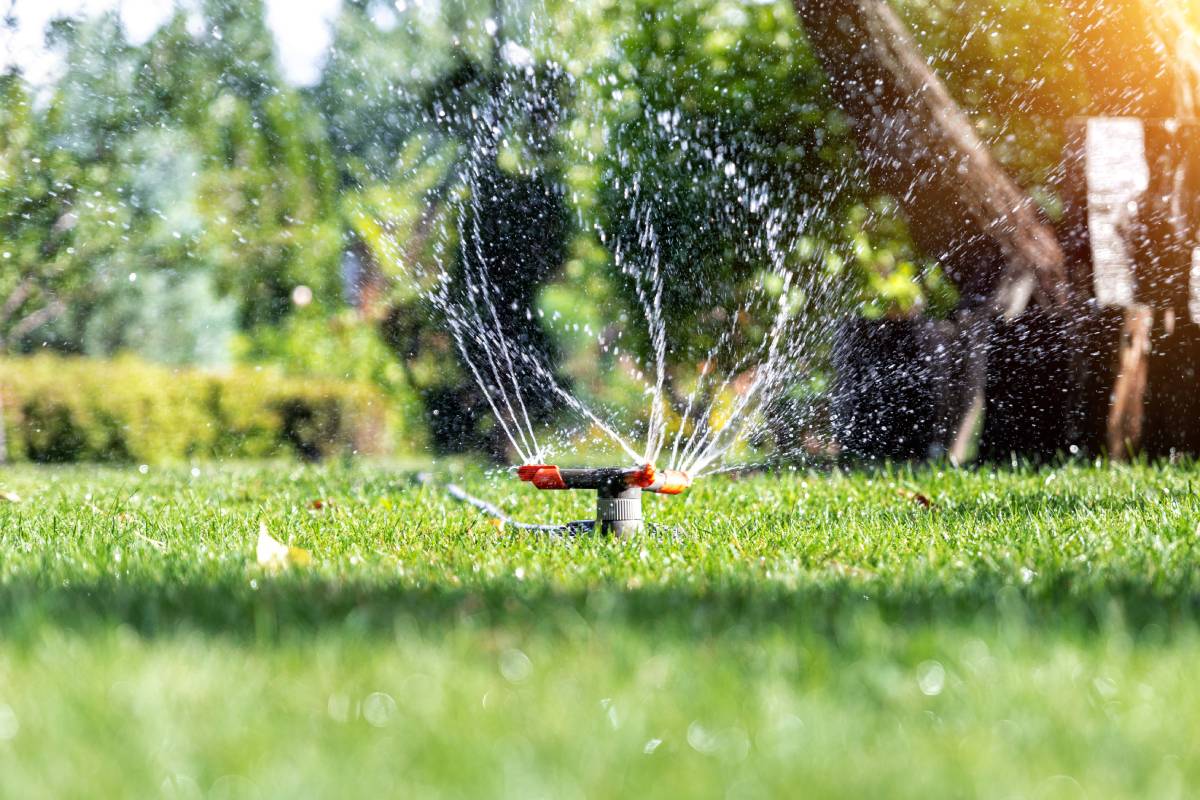Summer can be brutal on lawns. Scorching sun, long dry spells, and unexpected heatwaves put immense stress on turf, often turning lush green grass into patchy, brittle straw. For many homeowners, the biggest challenge is figuring out how to keep the lawn alive and thriving without wasting water or spending endless hours battling brown spots.
The good news is that with the right watering practices, healthy soil management, and a few smart lawn care adjustments, you can help your grass stay resilient even in the toughest months.
This guide takes a deep dive into watering, soil, and turf strategies to help your lawn not only survive but also thrive through summer’s extremes.
Understanding Your Lawn’s Water Needs
Water is the lifeline of any lawn, but not all grass or soil types require the same approach. Many people think lawns need to be watered daily during summer, but in reality, quality of watering matters far more than frequency.
- Soil type plays a major role. Clay holds water for longer but can easily become compacted. Sandy soil drains quickly, requiring more frequent watering in smaller doses. Loam is the ideal balance, retaining moisture without drowning roots.
- Grass type is another factor. Warm-season grasses like buffalo, couch, and kikuyu are generally more drought-tolerant than cool-season varieties like fescue or ryegrass.
- Root depth is critical. Shallow watering encourages roots to stay close to the surface, making grass more vulnerable to heat stress. Deep watering trains roots to grow deeper, accessing moisture reserves further underground.
A simple rule of thumb is to provide your lawn with around 25–30mm of water per week during summer, applied in one or two deep sessions rather than frequent shallow sprinklings. This mimics natural rainfall and builds drought resistance.
Timing Matters: When to Water
The timing of watering can make or break your lawn’s summer survival. Early morning, ideally between 5am and 9am, is the best time to water. At this time:
- Temperatures are cooler, meaning less evaporation.
- Grass blades have time to dry during the day, reducing the risk of fungal disease.
- Soil absorbs water more efficiently.
Watering in the evening may seem convenient, but it leaves grass damp overnight, which encourages fungal infections like dollar spot and brown patch. Midday watering, meanwhile, wastes water to evaporation before it even reaches the roots.
Efficient Irrigation Techniques
Not all watering systems are equal. If you want to save water and still keep your lawn in top condition, consider upgrading to more efficient irrigation methods.
- Soaker hoses and drip systems deliver water directly to the soil with minimal loss.
- Smart irrigation controllers adjust watering schedules automatically based on weather conditions, soil moisture, and evaporation rates.
- Sprinklers with rotating heads distribute water evenly without creating runoff or puddles.
A good practice is the cycle-and-soak method: water for 10–15 minutes, let the soil absorb, then water again. This reduces runoff and ensures deeper penetration.
The Role of Soil Health in Summer Lawn Resilience
Healthy soil acts like a sponge, holding moisture and nutrients that grass can draw from during hot spells. Unfortunately, many lawns suffer from compacted or depleted soil, which makes them far more vulnerable in summer.
Here are some soil strategies to boost resilience:
- Aeration: Relieves compaction, allowing air, water, and nutrients to reach the roots. Core aeration in spring or early summer can dramatically improve water infiltration.
- Topdressing: Applying a thin layer of compost or quality topsoil builds organic matter and improves moisture retention.
- Soil testing: A simple soil test can reveal pH imbalances or nutrient deficiencies that affect grass health.
The goal is to create a living, breathing soil ecosystem where roots thrive. When soil holds more moisture, you don’t need to water as often, and your lawn stays greener for longer.
Mulching and Organic Matter
Mulching isn’t just for garden beds—your lawn benefits too. Leaving grass clippings on the lawn (a practice known as grasscycling) returns organic matter and nitrogen to the soil, helping retain moisture.
If mowing creates heavy clumps, break them up to avoid smothering the grass. You can also spread a thin mulch layer or organic compost across high-stress areas to keep soil cool and nourished.
Choosing Drought-Tolerant Grass Varieties
If your lawn consistently struggles each summer, it might be time to rethink the type of grass you’re growing. Buffalo, kikuyu, and couch are popular warm-season grasses in Australia that handle heat well.
For areas with heavy shade, buffalo is particularly resilient. Kikuyu spreads quickly, making it great for high-traffic zones, while couch provides a fine texture and vibrant green colour if managed correctly.
Overseeding with drought-tolerant species can also help gradually transition your lawn into a more heat-resistant version without fully re-turfing.
Summer Pests and Diseases to Watch Out For
Heat-stressed lawns are more vulnerable to pests and diseases. During summer, keep an eye out for:
- Armyworms and cutworms, which chew through blades and leave bare patches.
- Lawn beetle grubs, which feed on grassroots and cause sudden wilting.
- Fungal diseases like brown patch, dollar spot, and fairy ring.
The best prevention is a healthy lawn with deep roots, proper watering, and balanced nutrition. Over-fertilising during heatwaves should be avoided, as it can burn the grass and make it even weaker against pests.
Mid-Summer Recovery & Rescue Tips
Even with the best care, some lawns will struggle during peak summer. If you notice brown patches, don’t panic—there are steps to rescue your turf:
- Deep water stressed areas to encourage recovery.
- Lightly fertilise with a slow-release product (avoid high-nitrogen fertilisers in extreme heat).
- Repair bare spots by reseeding or laying turf cuttings once conditions cool slightly.
- Provide shade where possible—temporary shade cloths can help small lawns during heatwaves.
- Avoid over-mowing. Cutting grass too short in summer stresses the plant. Keep blades around 6–7cm to provide natural insulation for the soil.
Integrating Smart Lawn Care Into Your Routine
Consistency is key. A lawn doesn’t bounce back from summer stress overnight, but by combining:
- Deep, efficient watering
- Morning irrigation
- Aerated, nutrient-rich soil
- Mulching and organic matter
- Drought-tolerant grass varieties
- Preventive pest and disease care
…you’ll have a lawn that not only withstands summer but comes out greener, stronger, and healthier than before.
Final Thoughts
Summer doesn’t have to mean watching your lawn dry up and fade. With smart watering habits, healthy soil practices, and the right turf choices, you can enjoy a vibrant green lawn year-round.
When it comes to watering, remember that simple methods like hose watering can be effective for smaller lawns if done deeply and in the early morning, while sprinkler systems or even smart irrigation setups are ideal for larger yards to ensure even coverage without wasting water. Choosing the right system for your lawn size and lifestyle will make summer care much easier and more efficient.
And if you’re looking for high-quality turf that’s already bred for resilience in the Australian climate, consider sourcing from A View Turf, a trusted supplier of premium turf varieties that will give your lawn the best possible start.

